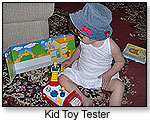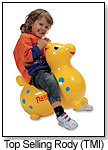
December 13, 2025


| “If something is selling, no matter how dated it might seem, keep it in stock!” |
 The first step is figuring out what customers want. Almost all of 29 retailers that spoke with TDmonthly Magazine said direct communication with customers in the store is their primary way of staying in touch with customers' wants and needs. A few retailers are also taking advantage of social networking tools such as Facebook and Twitter to solicit feedback. And a very lucky few have built-in market research tools — their own kids.
The first step is figuring out what customers want. Almost all of 29 retailers that spoke with TDmonthly Magazine said direct communication with customers in the store is their primary way of staying in touch with customers' wants and needs. A few retailers are also taking advantage of social networking tools such as Facebook and Twitter to solicit feedback. And a very lucky few have built-in market research tools — their own kids.  2. Get rid of stuff that’s not selling. Renee Nordhus, owner of ABC & Toy Zone in Rochester, Minn., told TDmonthly, “If we didn’t sell 12 or more [of an item] last year, we’re not buying it.” Once a month is a good time to identify items that are not selling and put them on sale to get them out of your store for good.
2. Get rid of stuff that’s not selling. Renee Nordhus, owner of ABC & Toy Zone in Rochester, Minn., told TDmonthly, “If we didn’t sell 12 or more [of an item] last year, we’re not buying it.” Once a month is a good time to identify items that are not selling and put them on sale to get them out of your store for good.
Copyright © 2025 TDmonthly®, a division of TOYDIRECTORY.com®,
Inc.